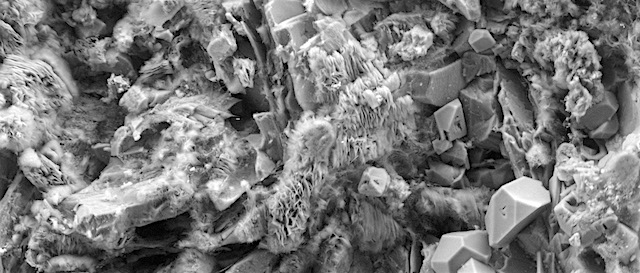 New research suggests that the bulk of clay minerals on Mars could have been formed as the planet’s crust cooled and solidified, not by later interactions with water on the surface as has long been assumed. (…)
New research suggests that the bulk of clay minerals on Mars could have been formed as the planet’s crust cooled and solidified, not by later interactions with water on the surface as has long been assumed. (…)
There are thousands of ancient phyllosilicate outcrops on the Martian surface. Phyllosilicates, or clays, are formed by the interaction of water with volcanic rock, leading many scientists to conclude that there must have been sustained surface water, groundwater or active hydrothermal systems at some point in Martian history. But the new research, published in the journal Nature, suggests that the clays may have formed during the creation of the Martian crust itself, long before any water flowed on the planet.
Backed by lab experiments and computer models, the researchers lay out how the scenario would have worked. In the very early solar system, Mars and other rocky planets are thought to have been covered by oceans of molten magma. As the Mars magma ocean began to cool and solidify, water and other dissolved volatiles would be outgassed to the surface, forming a thick, steamy atmosphere surrounding the planet. The moisture and heat from that high-pressure steam bath would have converted vast swaths of the newly solidified surface to clay. As the planet then evolved over billions of years, volcanic activity and asteroid bombardments would have covered the clays in some places and excavated them in others, leading to the widespread but patchy distribution seen on the surface today.
“The basic recipe for making clay is you take rock and you add heat and water,” said Kevin Cannon, a postdoctoral researcher at the University of Central Florida who led the research while completing his Ph.D. at Brown. “This primordial atmosphere created by a magma ocean would have been the hottest and wettest Mars ever was. It’s a situation where you could pervasively alter the crust and then just shuffle those materials around afterward.” [More at links]








